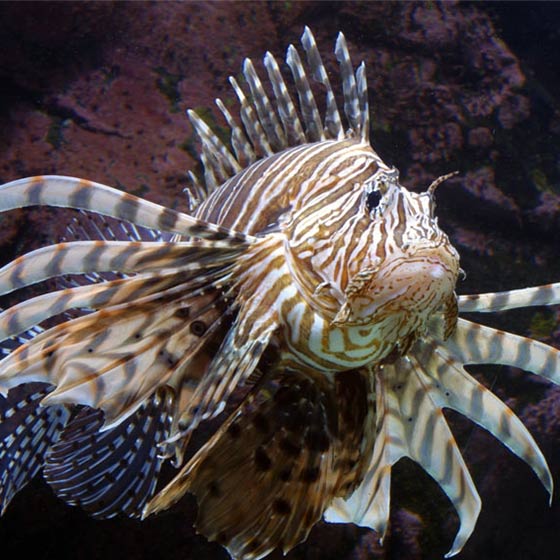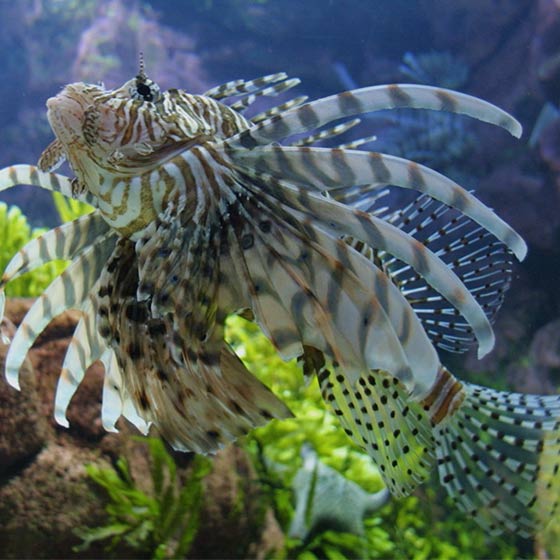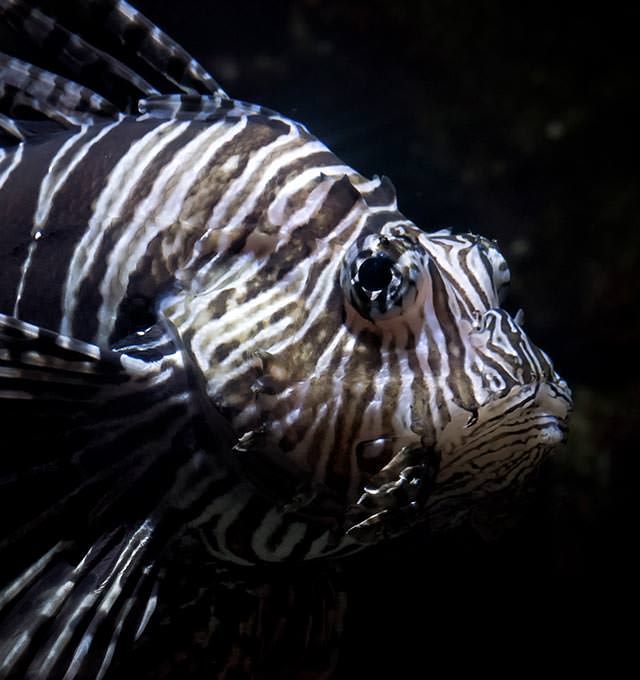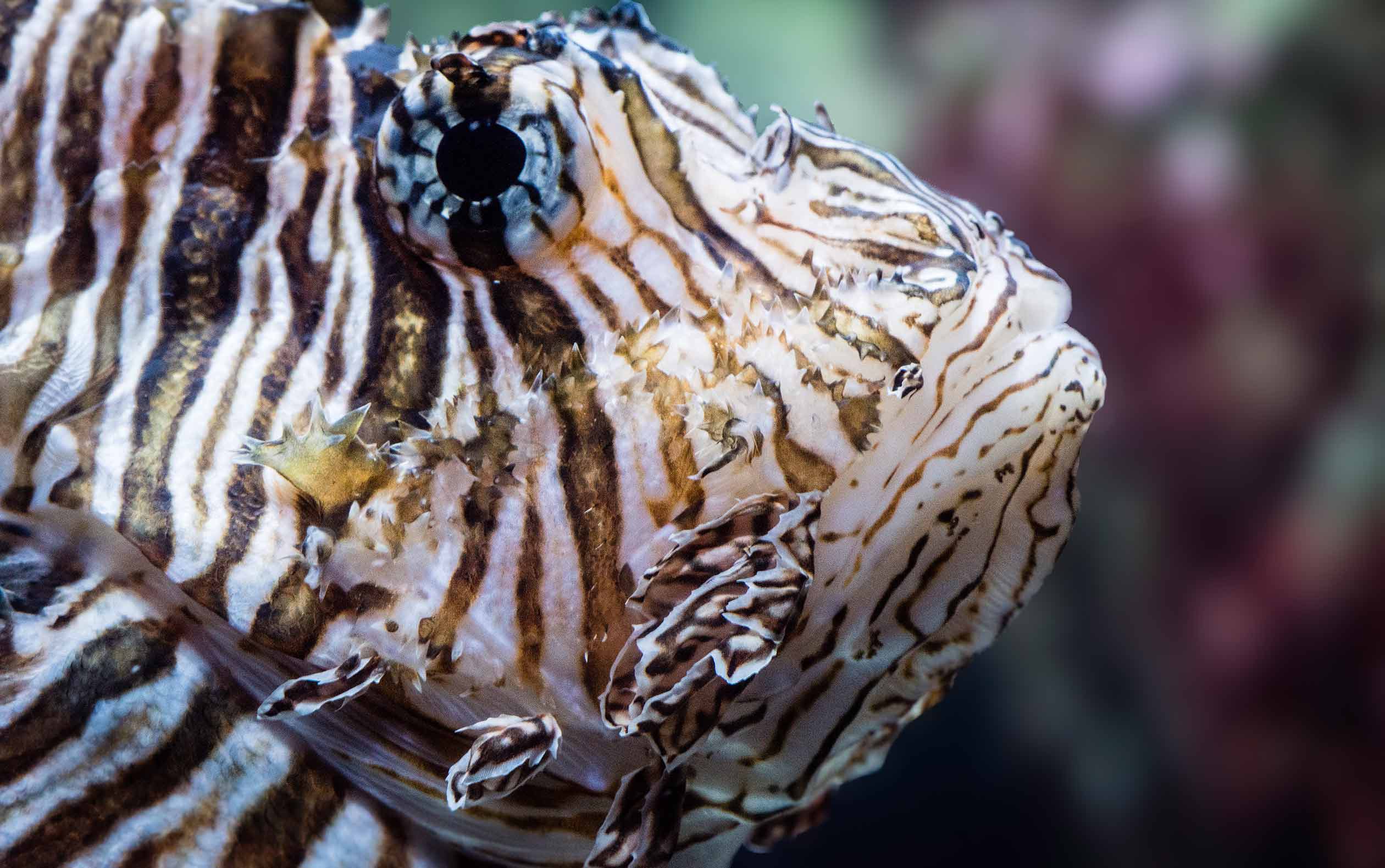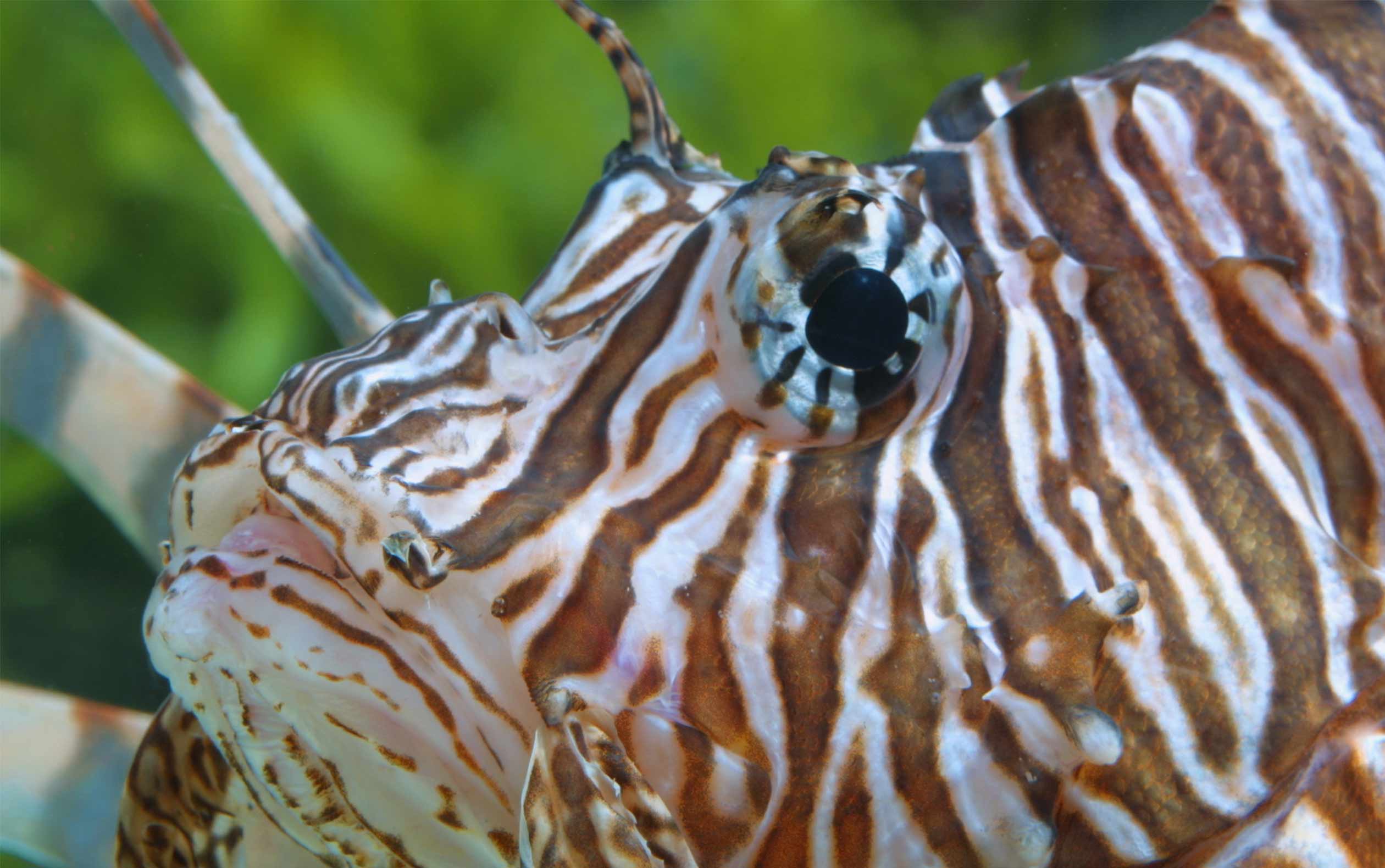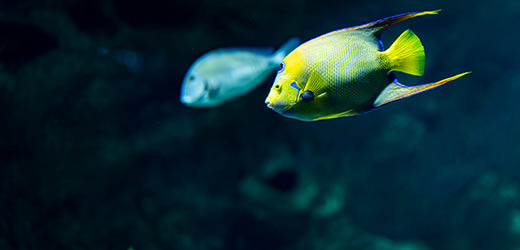Food
Red lionfish can be found in lagoons, between the surface and 50 m below.
They stay under the shelter of an overhang during the day and come out at night to feed. Lionfish lie in wait at night, hunting fish, shrimp and crabs.
Their unique hunting style is carried out in a pack that surrounds the victims with the lionfish’s large pectoral fins. Their protractile mouth (which can be thrust forward) and their ability to distend their stomach allows them to swallow prey as big as they are, but also enormous quantities of food in general.
